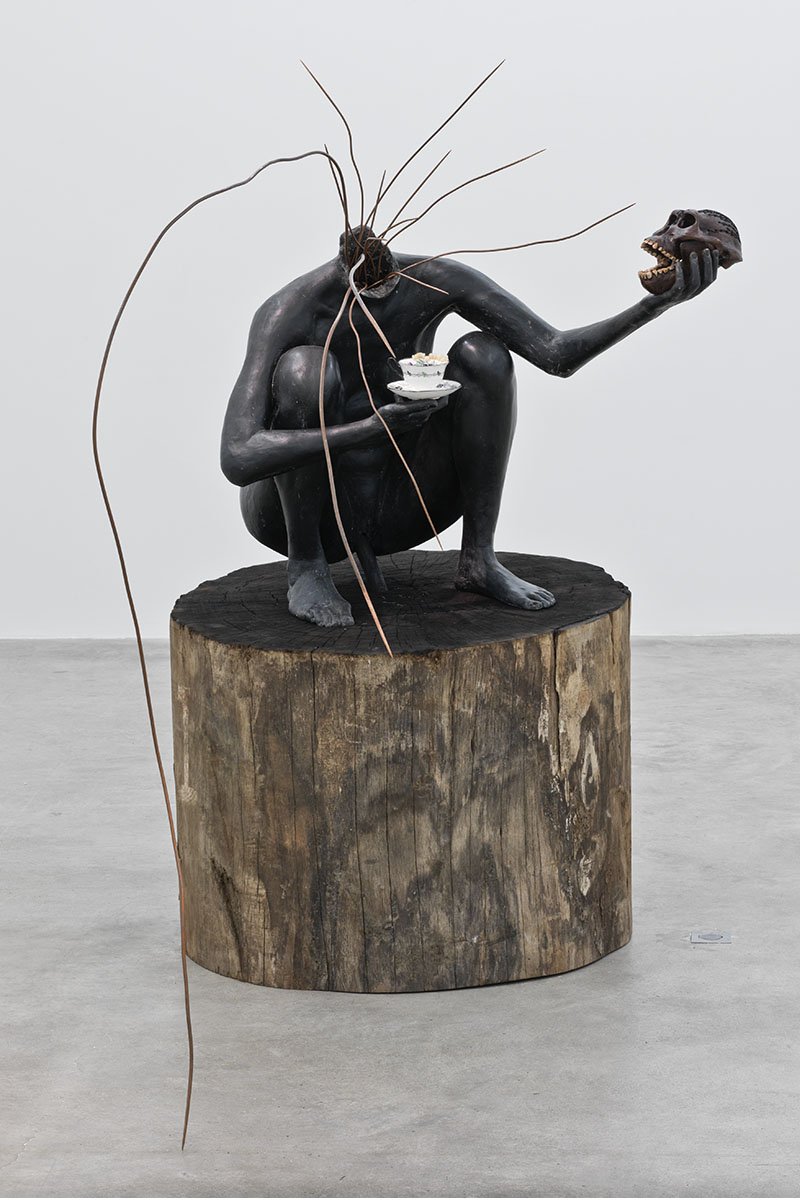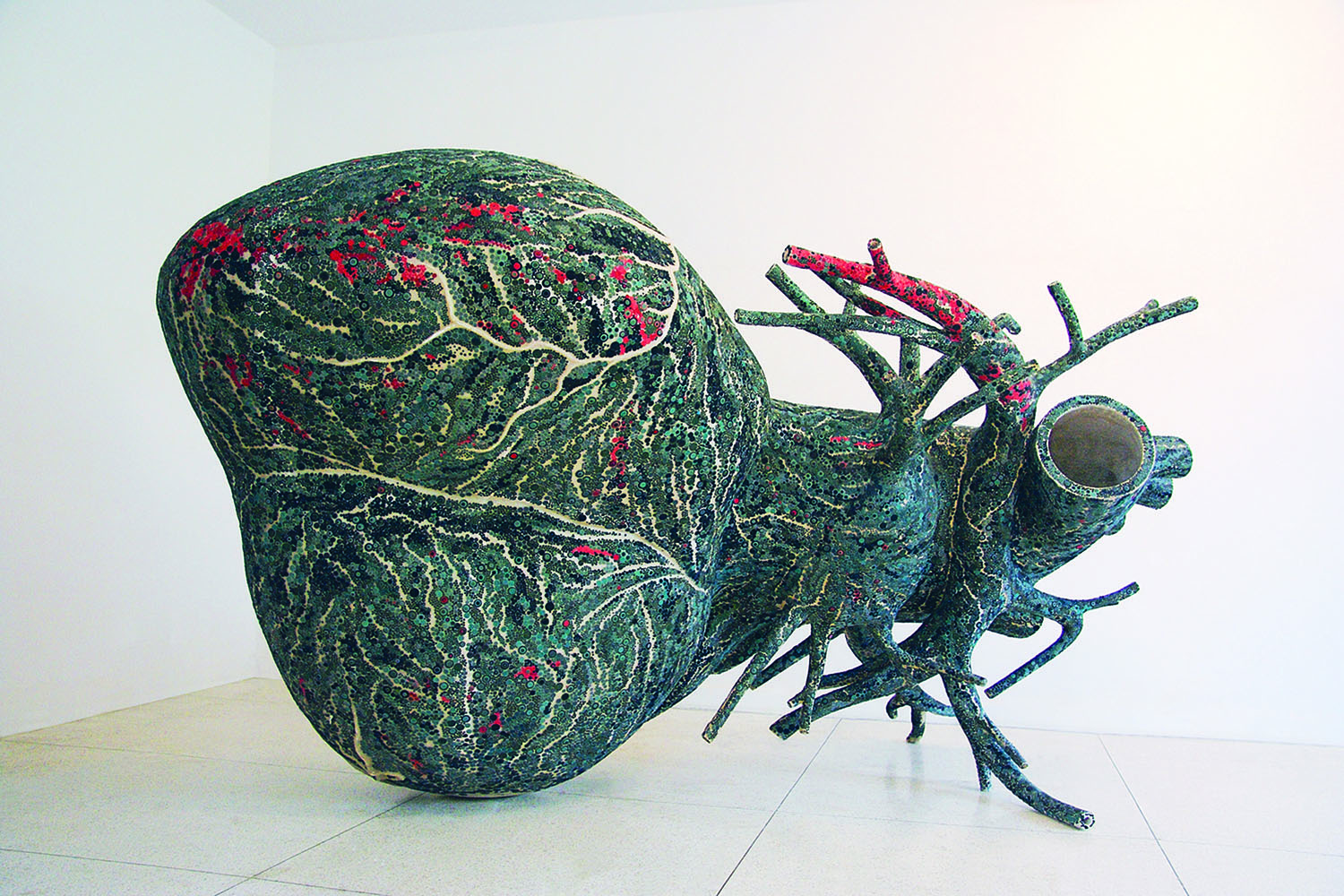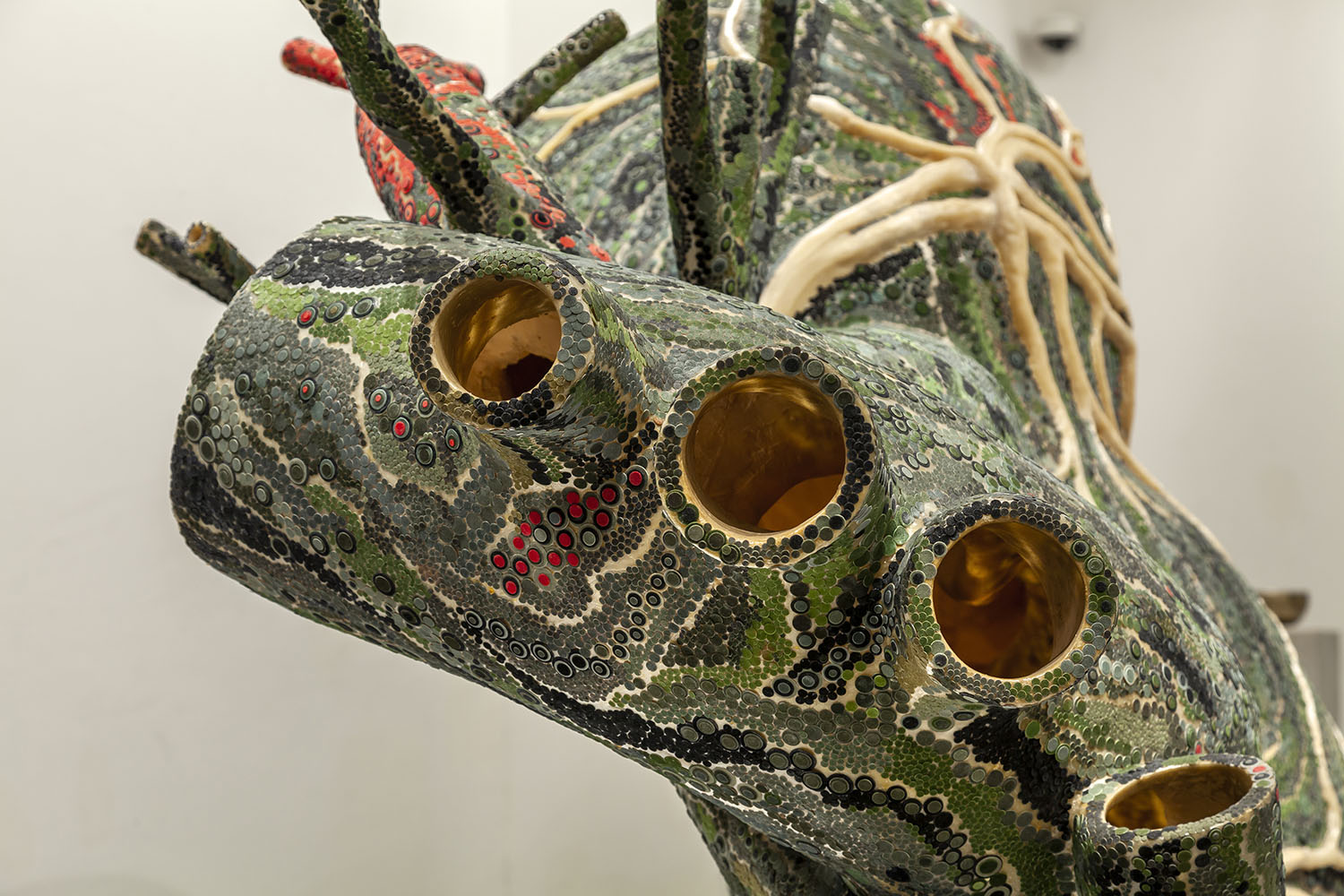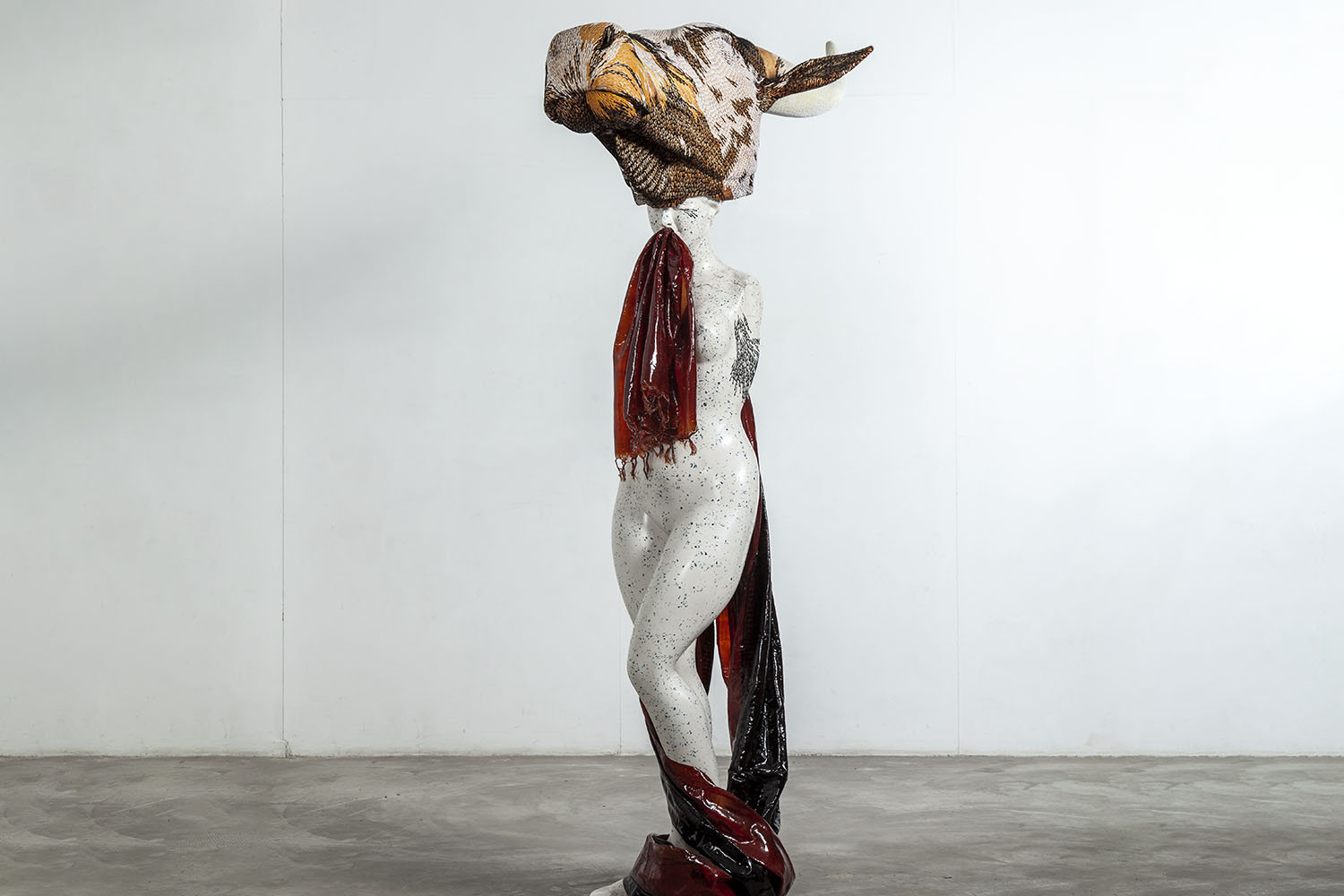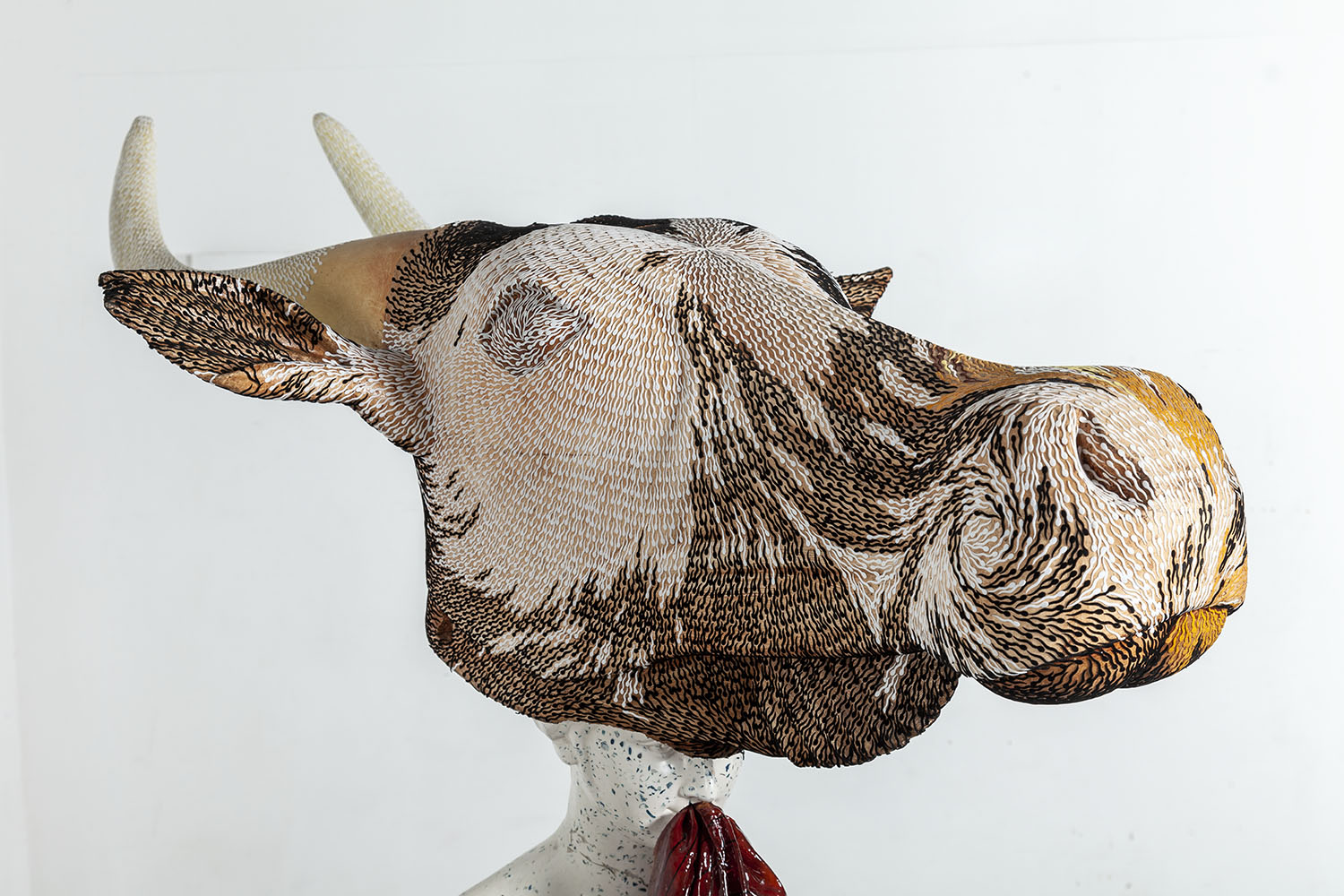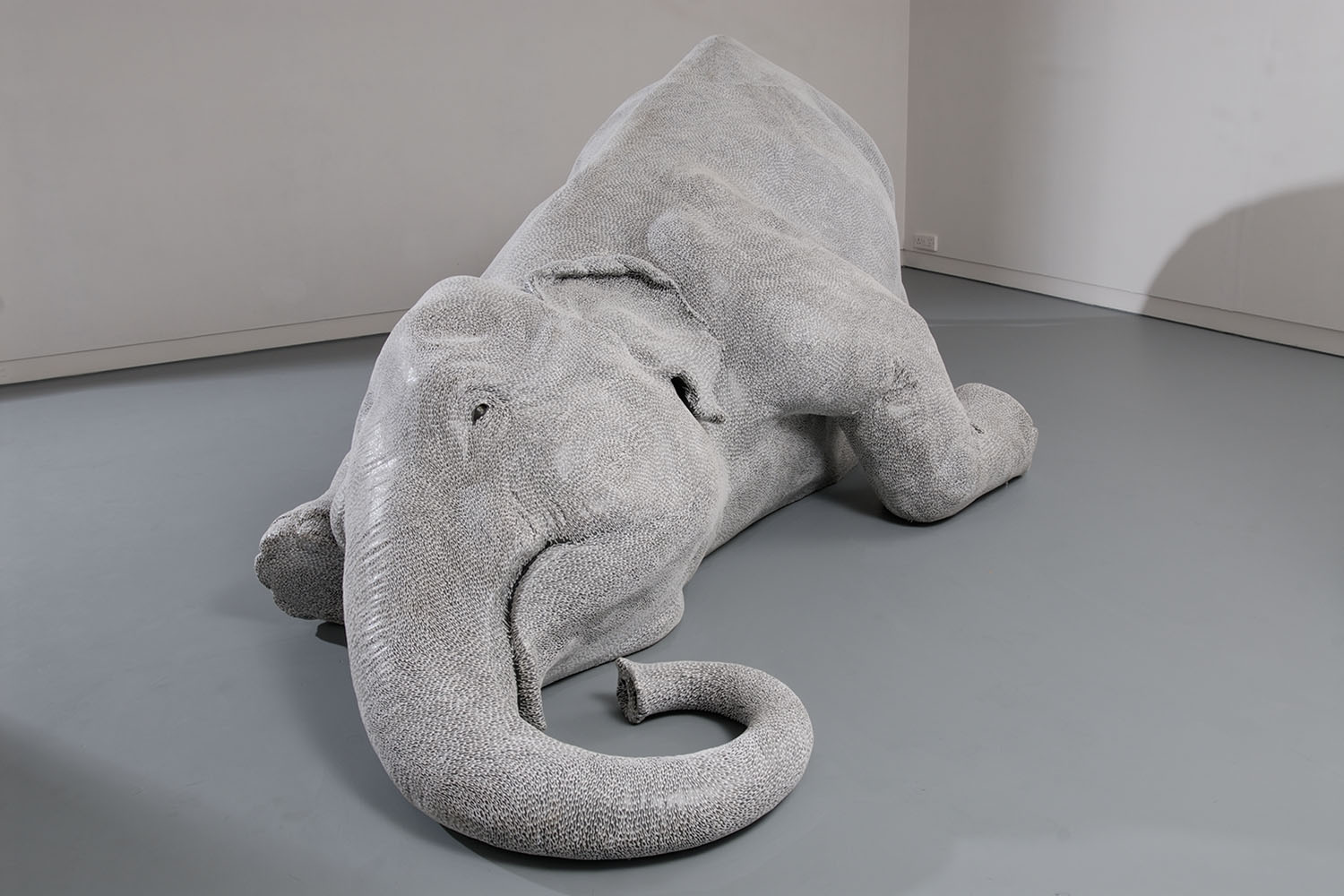ARTICLE
Bharti Kher
In her animal sculptures, Kher combines ferality with tenderness and innocence, covering the sculptures in a coat of colourful, pulsating bindis. Some of these works — such as a life-size elephant (The Skin Speaks a Language not its Own, 2007) or the heart of a whale (An Absence of Assignable Cause, 2007) — are modelled with anatomical accuracy and made to their original scale, challenging the dimensions of a gallery space. Kher also uses objects such as wooden wheels, mannequin body casts, pillars and architectural remains, such as in Impossible Triangle (2012).
Kher’s work has attracted a large international audience, most prominently through her solo exhibitions that include Virus at the Baltic Centre for Contemporary Art (2008); A Wonderful Anarchy at Hauser & Wirth, Somerset (2019); A Consummate Joy at the Irish Museum of Modern Art, Dublin (2020); and An Unexpected Freedom of Chaos at the Galerie Perrotin, New York (2020). She has also participated in several group exhibitions at institutions such as Art Gallery of New South Wales; Kochi Biennale Foundation; Guggenheim Abu Dhabi; Museum of Contemporary Canadian Art, Toronto; Le Centre Pompidou, Paris; National Museum of Modern and Contemporary Art, Seoul; KHOJ International Artists’ Association, Delhi; and Yale University School of Art, New Haven.
Her work is part of the permanent collections of the Tate Modern, London; the Walker Art Center, Minneapolis; the Vancouver Art Gallery; and the Devi Art Foundation in New Delhi. She won the Sanskriti Award in 2003 and the ARKEN Art Prize in 2010 and was bestowed the honour of Chevalier dans l’Ordre des Arts et des Lettres (Knight of the Order of Arts and Letters) by the French Government in 2015.
Kher is married to artist Subodh Gupta and lives and works in Gurgaon, Haryana.
Bibliography
Our website is currently undergoing maintenance and re-design, due to which we have had to take down some of our bibliographies. While these will be re-published shortly, you can request references for specific articles by writing to hellomapacademy@map-india.org.




